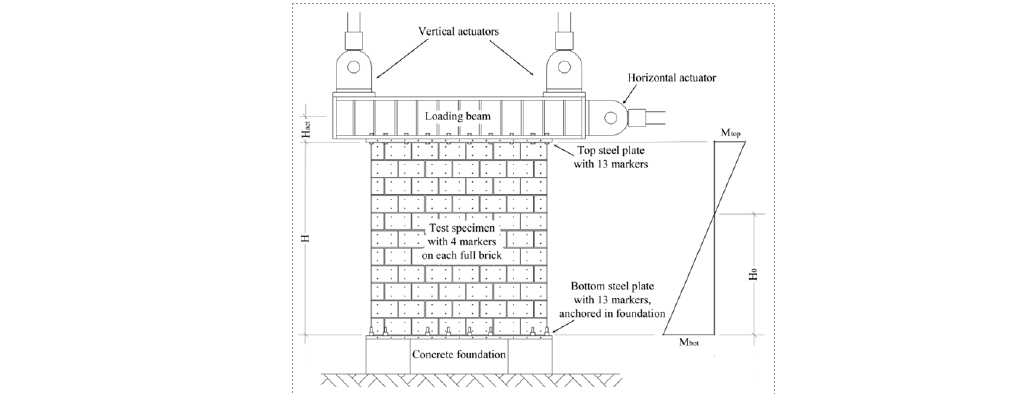1 PhD student, Earthquake Engineering and Structural Dynamics Laboratory (EESD), School of Architecture, Civil and Environmental Engineering (ENAC), Ecole Polytechnique Fédérale de Lausanne (EPFL), Lausanne, Switzerland, sarah.petry@epfl.ch
2 Assistant Professor, Earthquake Engineering and Structural Dynamics Laboratory (EESD), School of Architecture, Civil and Environmental Engineering (ENAC), Ecole Polytechnique Fédérale de Lausanne (EPFL), Lausanne, Switzerland, katrin.beyer@epfl.ch
ABSTRACT
Existing recommendations estimate the drift capacity of unreinforced masonry (URM) piers as a function of the failure mode. The empirical relationships are based on results from quasi-static cyclic tests on single U RM piers, which were test ed simulating either fixed-fixed or cantilever boundary conditions. In real structures, the vertical URM piers are connected to each other by horizontal structural elements such as slabs and spandrels that provide a coupling action. Depending on the stiffness and strength of these horizontal elements, the boundary conditions of the piers vary significantly.
In order to investigate the influence of the boundary conditions, three quasi-static cyclic tests on identical URM piers were performed. All piers were subjected to the same vertical load but the boundary conditions for the lateral loading were varied. For the first pier, fixed-fixed boundary conditions with zero rotation at the top were simulated. For the second and third piers, the moment applied at the top of the pier was proportional to the applied horizontal load and therefore the height of zero moment was constant at 0.75 and 1.5 times the pier height for the second and third pier, respectively. This paper presents preliminary results of the tests on these piers and discusses the influence of the boundary conditions on the displacement capacity of URM piers. In addition , force and drift capacities are compared to values predicted by the Eurocode.
KEYWORDS: unreinforced masonry, quasi-static cyclic testing, displacement capacities, coupling influence
293.pdf



